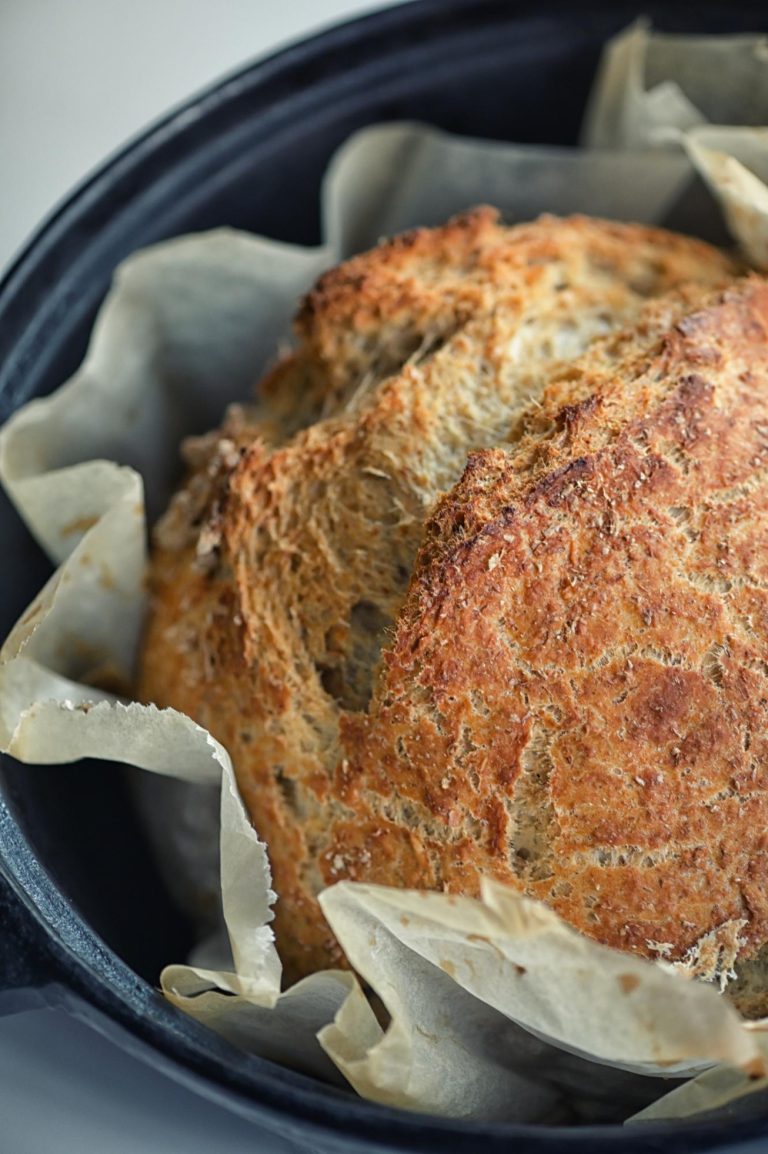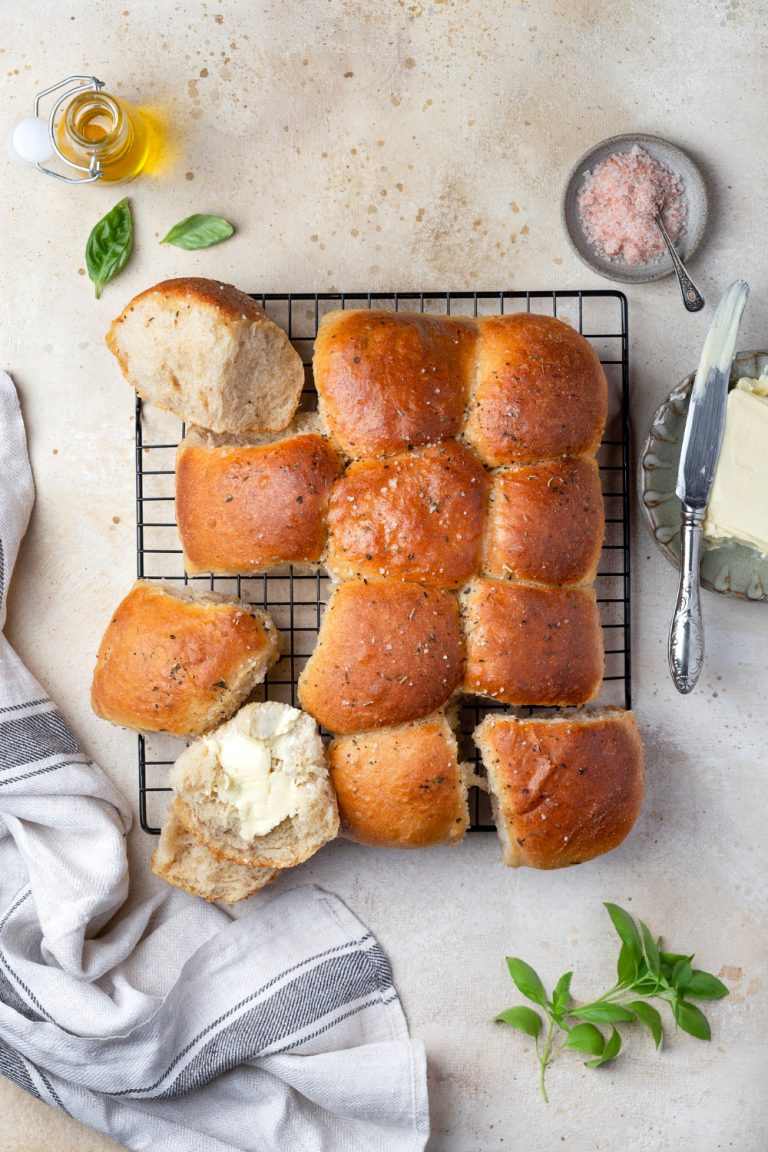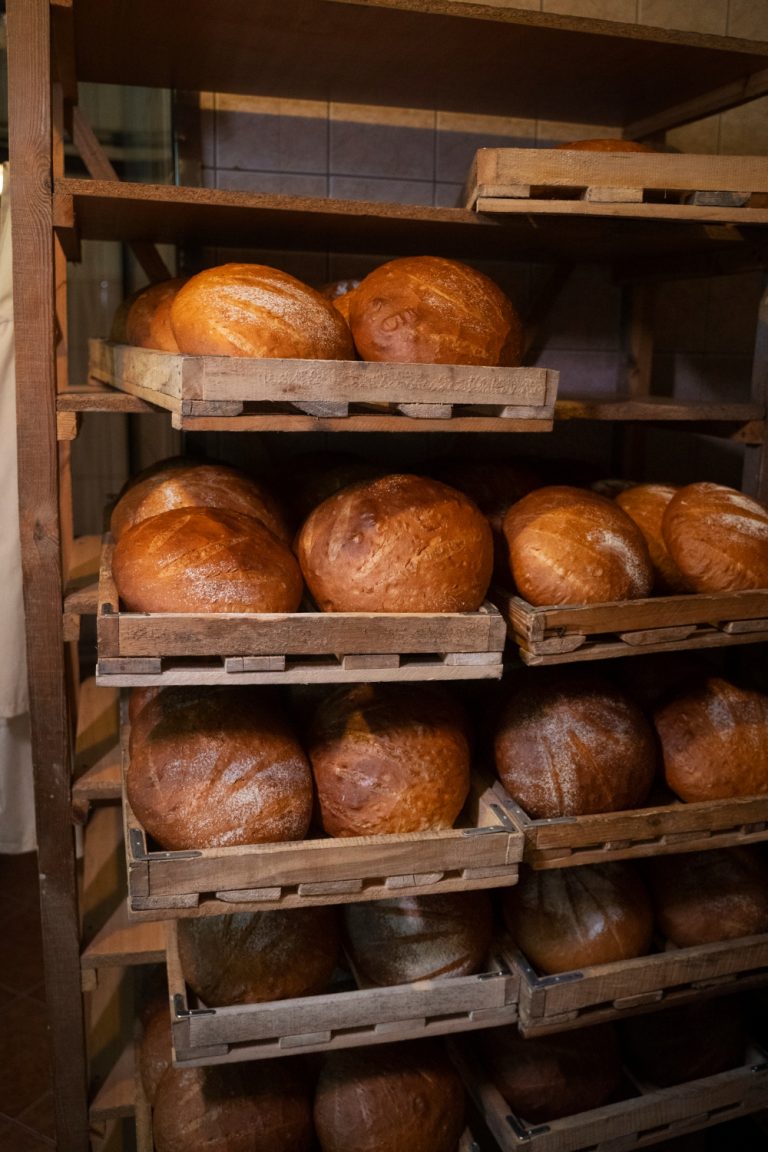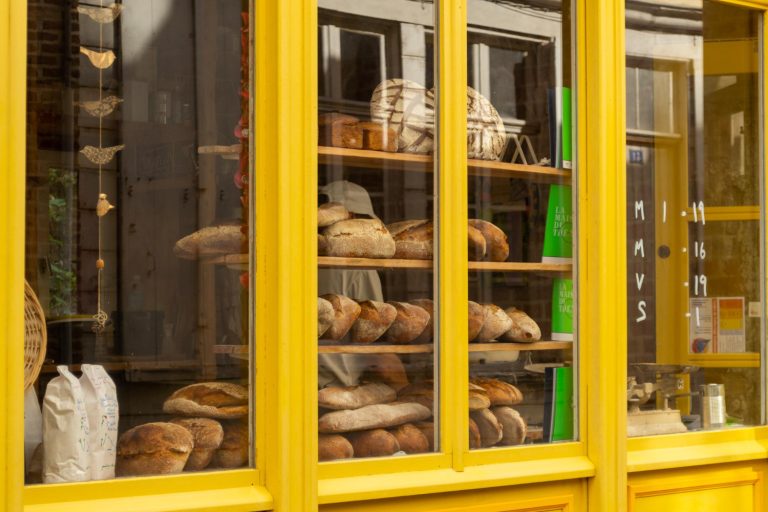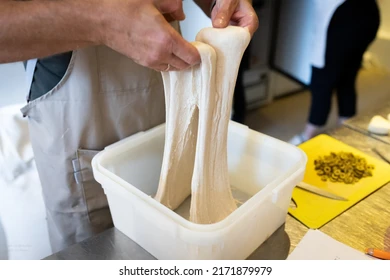How to Make a Thanksgiving Sourdough Cake: A Step-by-Step Guide
Americans bake over 50 million pumpkin pies each Thanksgiving. This year, you can create something uniquely memorable instead—a Thanksgiving sourdough pumpkin cake.
We found that traditional Thanksgiving flavors blend perfectly with sourdough’s tangy complexity. The result is an unforgettable Thanksgiving sourdough cake that will make your guests ask for the recipe. Your sourdough starter can bring something suniqueto the holiday table.
Our team’s passion for baking led us to perfect this recipe through countless hours of testing. The process is simple enough for anyone to follow. This show-stopping dessert works well for sourdough enthusiasts and newcomers to holiday baking.
This recipe can elevate your holiday baking. Let’s create a Thanksgiving cake that blends tradition with a delicious sourdough twist!
Essential Tools and Ingredients for Your Thanksgiving Sourdough Cake
Let’s examine what we need to make our Thanksgiving sourdough cake. Getting your tools and ingredients ready ahead of time makes baking much more enjoyable.
Required Baking Equipment and Tools
My experience with sourdough baking shows that exact measurements matter. Here’s what you’ll need:
- Digital Kitchen Scale – For accurate measurements
- Glass Container – For starter maintenance
- 9×13 Baking Dish – Perfect for sheet cakes
- Mixing Bowls – At least two large ones
- Bench Scraper – For handling sticky dough
- Silicone Bowl Covers – Better than plastic wrap
Key Ingredients and Possible Substitutions
Our Thanksgiving sourdough cake needs specific ingredients. Here’s a simple reference table to guide you:
| Ingredient | Purpose | Possible Substitution |
|---|---|---|
| All-Purpose Flour | Base structure | Whole wheat (up to 25%) |
| Active Sourdough Starter | Flavor and texture | Discard (if less than 2 weeks old) |
| Cane Sugar | Sweetness | Organic coconut sugar |
| Butter | Moisture and richness | Coconut oil |
| Seasonal Spices | Holiday flavor | Adjust to taste |
Understanding Your Sourdough Starter
You’ll need a healthy sourdough starter, but don’t stress if yours isn’t super active. Sweet recipes like our Thanksgiving sourdough cake work best with a starter that’s been fed in the last 24 hours. Important tip: Your starter should have a pleasant, tangy aroma without being too sour—this could overwhelm the delicate holiday flavors.
The best results come from keeping your starter at 100% hydration (equal parts flour and water by weight). This consistency creates the perfect tender, moist crumb in our cake recipe. Fresh discard works, too – make sure it’s no more than two weeks old to avoid overly sour notes in your holiday treat.
Your starter doesn’t need to be super active like it does for bread. We’re using it mainly for its unique flavor and tenderness rather than to make the cake rise.
Preparing Your Sourdough Base
Let’s prepare our sourdough base for this special holiday cake. How we prepare our starter before baking determines the perfect Thanksgiving sourdough cake.
Feeding Schedule for Holiday Baking
My starter preparation begins three days before baking day. This proven feeding schedule works well:
| Time | Action | Notes |
|---|---|---|
| Day 1 Morning | First Feed | 1:5:5 ratio (starter:flour: water) |
| Day 1 Evening | Second Feed | Maintain the same ratio |
| Day 2 Morning | Final Feed | Adjust to a thick consistency |
Creating the Perfect Starter Consistency
The cake batter needs a specific starter consistency. Your starter should feel thick like pancake batter—this makes a big difference in our Thanksgiving sourdough cake. A bit more flour helps if it’s too thin, while a splash of water works for thick starters. Important tip: 100% hydration (equal parts flour and water) gives consistent results.
Overnight Fermentation Tips
Overnight fermentation develops the best flavor. These tested guidelines help achieve great results:
- Keep room temperature between 68-72°F (20-22°C)
- Cover with a loose-fitting lid to allow gasses to escape
- Place away from drafts or heat sources
- Check for slight dimpling on top in the morning
Fermentation breaks down the grain and adds that signature tangy flavor that makes our Thanksgiving sourdough cake special. Note that a fermented cake batter becomes denser than traditional cake, creating that perfect holiday texture we want.
An active starter or discard works well in this recipe since we need to add other leavening agents. Fresh discard (less than two weeks old) maintains that perfect balance of flavors without overpowering the seasonal spices we’ll add later.
Temperature control during fermentation makes a vital difference. Your oven with just the light on creates the perfect environment for starter development overnight if your kitchen runs cold.
Making the Holiday Cake Batter
The exciting part begins as we shape our carefully prepared starter into a delicious holiday treat. The secret to a perfect Thanksgiving sourdough cake lies in the precise mixing sequence and gentle handling of our ingredients.
Mixing Wet and Dry Ingredients
My process starts with combining dry ingredients in a separate bowl and whisking them together for even distribution. The wet ingredients work best in this specific order:
| Order | Ingredient Group | Mixing Speed |
|---|---|---|
| 1st | Cream butter & sugar | Medium |
| 2nd | Add eggs & vanilla | Low |
| 3rd | Incorporate starter | Gentle fold |
| 4th | Add remaining liquids | Low |
Important tip: The recipe needs to be adjusted based on your starter amount. You should reduce the flour and liquid weights equally to match your starter quantity. For example, a 120g starter means reducing both flour and water by 60g.
Adding Seasonal Spices and Flavors
Our Thanksgiving sourdough cake reaches its peak with the right blend of seasonal additions. These tested favorites work beautifully:
- White chocolate with pecans for subtle sweetness
- Cranberries with orange zest for holiday brightness
- Cinnamon and warming spices for traditional appeal
Add these flavors after the mcentralmixing but before the final fold. Keep in mind that wet additions like honey or fruit may require adjustments in the overall liquid content.
Proper Folding Techniques
The rproperfolding technique is vital for perfect cake texture. The specific motion involves carving through the mixture with a spatula and folding the bottom over the top. This method traps air bubbles in the batter to create that lovely tender crumb.
Adding lighter ingredients in thirds yields the best results. Key point: The folding should stop once the mixture loses its streaks – overmixing will deflate the carefully crafted batter. A large bowl and flexible silicone spatula provide a ample room to work effectively.
If the batter becomes too thick, especially when replacing whole milk with a starter, a teaspoon of melted butter or vegetable oil might be needed. This helps maintain the perfect moisture balance that makes our Thanksgiving sourdough cake exceptional.
Baking and Cooling Techniques
The big moment has arrived—it’s time to turn our carefully prepared batter into a perfectly baked Thanksgiving sourdough cake. Success comes down to precise temperature control and patience during the cooling process.
Temperature and Timing Guidelines
My years of tweaking this recipe have led to these exact specifications that deliver consistent results:
| Baking Phase | Temperature | Duration |
|---|---|---|
| Original Preheat | 350°F | 15 minutes |
| Main Bake | 350°F | 30-40 minutes |
| Final Check | 350°F | As needed |
Pro tip: The rack should always sit in the center of the oven to distribute heat evenly. My Thanksgiving sourdough cake turns out best in a light-colored pan that prevents the edges from over-browning while the center bakes.
Testing for Doneness
Several testing methods help ensure perfect results:
- The center should spring back when pressed gently without leaving indentations
- A toothpick inserted in the middle should come out clean or with few crumbs
- The edges should pull away slightly from the pan
- The top should show a uniform golden-brown color
- The center should make a light, hollow sound when tapped
INecessary One method alone won’t tell the whole story. These tests combined give me confidence that my Thanksgiving sourdough cake has baked perfectly.
Proper Cooling Methods
Patience becomes vital here. The cooling process matters js much as baking. Here’s my proven cooling method:
The cake needs to rest in the pan on a wire rack for the first 10 minutes, which sets the structure properly. After careful removal from the pan, it should cool completely on the wire rack.
Critical timing: Decorating should wait at least 90 minutes. Room temperature cooling naturally creates the perfect crumb structure.
Bakers often rush this step. Cutting into a warm cake leads to a gummy, dense texture. Patience allows internal steam to redistribute, creating the perfect, tender crumb that makes our Thanksgiving sourdough cake exceptional.
Festive Decorating Ideas
A stunning centerpiece that captures the holiday season starts with our perfectly baked and cooled Thanksgiving sourdough cake. The right decorations can turn a simple cake into something truly memorable.
Traditional Thanksgiving Themes
Experience taught me that edible sugar decorations create the most impressive results. Thanksgiving-themed sugar toppers work best as they withstand both room temperature and freezing. My Thanksgiving sourdough cake features a cohesive theme with these classic elements:
| Color Scheme | Decorative Elements | Placement |
|---|---|---|
| Autumn Gold | Maple leaves | Border |
| Rustic Orange | Pumpkins | Center |
| Deep Brown | Acorns | Corners |
| Harvest Red | Berries | Scattered |
Pro tip: Layering different types of decorations adds depth and visual interest. Start with classic sprinkles as a base, then build up with more prominent decorative elements.
Natural Decoration Options
Nature provides the most beautiful decorations. My Thanksgiving sourdough cake shines with these edible natural elements:
- Fresh seasonal fruits arranged in geometric patterns
- Edible flowers that complement fall colors
- Hand-painted sugar leaves in autumn shades
- Crystallized herb leaves for subtle sparkle
Important note: Fresh elements should be added to serve as a way to maintain their vibrant appearance. Some edible flowers and fruits can release moisture, so strategic positioning prevents soggy spots.
Creating Seasonal Patterns
Creating seasonal patterns that tell a story makes this Thanksgiving sourdough cake unique. A smooth frosting base sets the design stage using specialized fall-themed sprinkles and toppers.
These principles create the most striking effect:
- Create a focal point using a more prominent decorative element
- Work outward with more minor details
- Maintain balance with color distribution
- Layer textures for visual interest
Bulk fall sprinkles beautifully create subtle texture throughout the design. Pre-made edible fall leaves in various sizes make bold statements and create eye-catching cascading effects.
Custom cake toppers with messages like “Give Thanks” or “Blessed” surrounded by delicate autumn leaves and pumpkins work great for special occasions. These finishing touches make our Thanksgiving sourdough cake both delicious and Instagram-worthy.
Designer’s secret: Simple areas let other parts shine. This approach prevents overwhelming designs and maintains an elegant, professional look. Using a maximum of three different techniques ensures the design stays cohesive.
This cake’s decoration offers versatility—adapt these ideas to match your style or family traditions. Whether you prefer simple elegance or abundant harvest themes, these decorating techniques help create a stunning centerpiece for your holiday table.
Conclusion
Making a Thanksgiving sourdough cake combines traditional holiday flavors with the unique complexity of sourdough baking. Success comes from careful attention to each step, based on my years of experience—from preparing the perfect starter to the final decorative touches.
The recipe combines precise techniques with creative freedom. You can craft a dessert that’s both delicious and visually stunning. Your guests will love the extra effort and distinctive tangy notes that make this cake special.
Want to begin your sourdough trip? The Yeast We Can Do helps lift your bread and pizza game with an authentic artisanal sourdough starter. Our small-batch starter creates exceptional bread and pizza with perfect tangy flavor and signature crust. This applies whether you’re a passionate home baker or a restaurant owner who wants to add true sourdough’s unmistakable flavor to your menu. Email john@theyeastwecando.com to get your hands on our premium sourdough starter and revolutionize your baking.
Note that patience and practice make perfect sourdough baking possible. My Thanksgiving sourdough cake recipe provides endless possibilities for customization while keeping that perfect balance of flavors. Try this recip,to createe a memorable dessert that could become your new holiday tradition.
FAQs
Can I incorporate sourdough into a pre-made cake mix?
Yes, you can add sourdough discard to a boxed cake mix. Follow The cake mix instructions, reduce the liquid by half a cup, and add one cup of sourdough discard. Avoid adding extra flour even if the recipe suggests it for high altitudes.
Is it necessary to feed the sourdough starter before baking it?
For recipes that use sourdough discard, you can often use the starter straight from the refrigerator without feeding. However, for recipes like bread, where the starter needs to be very active, it’s best to remove the starter from the fridge, feed it, and let it activate for about 4-12 hours before use.
What is the key to perfect sourdough?
The key to achieving great sourdough is managing the water content in your dough. More water will result in a dough with a more open crumb, which means bigger holes and a softer texture in the baked sourdough.
Can I let sourdough sit overnight before baking?
Yes, letting your sourdough ferment in the refrigerator overnight is often beneficial. This method makes the baking schedule more manageable and enhances the flavor depth due to the prolonged, cold fermentation.

